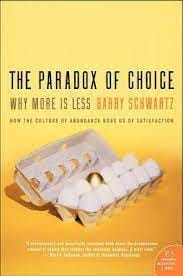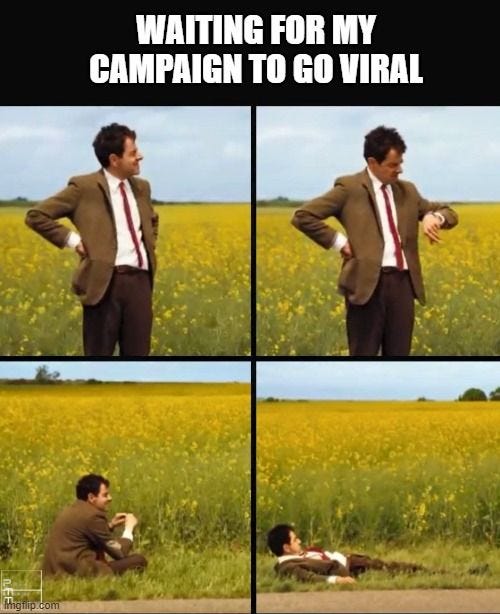Marketing Dojo #3: It's time to rethink the paradox of choice, chasing virality and more.
The new paradox of choice, the myth of virality, TikTok's addictive design and lot more.
Hello,
I hope you are having a productive week. In this newsletter, we will cover
Too much choice or too little? The paradox of choice’s replication crisis.
The secret to going viral (meme)
TikTok’s design elements that make the app addictive
Sell the sizzle, not the steak.
Two podcast recommendations and much more.
I am excited to share this edition with you. Let’s dive right in.
The New Paradox of Choice.
Are we overwhelmed with too many choices or frustrated with too few?
What is a bigger villain? Choice deprivation or choice overload.
If like me, you have read Barry Schwartz's Paradox of Choice - the answer would be unequivocal. The book convinced me of the disadvantages of too many choices - buyer's remorse, trade-offs and analysis paralysis.
But this new paper, co-authored by Barry Schwartz, has upended some previously held beliefs.
For the study "Choice Deprivation, Choice Overload and Satisfaction with Choices Across Six Nations", 7000 participants across the US, Russia, India, Brazil, China & Japan were asked questions about choices in domains ranging from cold drinks to career opportunities.
Here are some highlights from the study
Choice deprivation is a more common experience than choice overload.
51% of the time, the respondents felt like they needed more choices compared to 14% when they experienced too many options.
Respondents from India and Brazil experienced having too few choices more than 60% of the time!
Choice deprivation stings more than choice overload. While having too few and too many choices both cause dissatisfaction. Too few options led to a greater degree of discontent among the respondents.
Jobs - A category where respondents universally felt they had too few options.
US customers frequently experienced too many choices than the rest of the respondents.
Choice overload... what's that? The Chinese and Japanese respondents didn't view more options as unfavourable.
As marketers, we are choice architects. We are constantly struggling to decide on the optimum number of choices - product SKUs, subscription models, calls to action, outbound links on our blogs, etc.
The customers have adapted to infinite scrolling and are now comfortable with more choices.
Keep an eye on this evolving research that will redefine the way we do marketing.
The Viral Formula: 9 Parts Luck, 1 Part Magic
Virality is 90% luck - Morgan Housel.
I was listening to Morgan Housel's interview on the Danny Miranda podcast, and his insights about the unpredictability of a content's success struck a chord with me.
As marketers, we often hear things like "create viral content" or "make it go viral". The truth is that planning for viral content shows a need for more planning.
The way to generate a good idea is to generate many ideas. Similarly, the way to create content that goes viral is to create consistent content. There are no shortcuts.
TikTok’s algorithm is not its secret sauce; its design is.
TikTok's secret sauce - I re-read this article several times to understand what makes TikTok such a sticky product.
In the article Arvind Narayanan, a research scientist at The Knight Institute, explains how design is the dependable sidekick that makes TikTok’s algorithm look like a superhero.
The ease of scrolling, vertical screens and easy-to-use creator tools create an unbeatable competitive advantage for the platform.
Another sticky app that has some commonalities in design is Tinder. Its mobile-first, vertical screen and swiping feature make it easy to scroll and discover perfect matches. I recommend this Podcast on Tinder from the Land of the Giants to gain insights about the behemoth that re-defined the online dating industry.
Creative Excellence: This arch is different
The new ad is missing the typical elements of a McDonald’s creative - hunger-inducing shots of juicy burgers, its recognisable mascot and end music. But it more than just makes for creativity with a dollop of exaggerated humour and quirkiness.
Take a minute-long break, watch the ad and crave that McChicken for lunch.
And if you want to figure out how the ad did on quantitative metrics, here’s system 1’s report on the ad performance.
Selling the sizzle, not the steak.
I work in a science company where we are too close to the product. Often our communication becomes all about the product features, and we often trip on the tightrope of benefits v/s features.
This evergreen article by Buffer is one that I generously share whenever we need to re-calibrate our communication. This short read is filled with relatable examples of customer-centric communication.
Quick stuff:
Instagram removes its shopping tab from the home screen (changing priorities).
TikTok is undercutting other social media giants. The cost to obtain 1000 impressions on TikTok is half of IG Reels, a third cheaper than Twitter and more than 60% cheaper than Snapchat. (Paywall)
Medium starts a new Mastodon instance. (Fediverse is expanding).
That’s all for this week. I am still learning the ropes of creating a fabulous newsletter worth your time. So thank you for being an early supporter.
If you have any suggestions for me, please leave me a comment.






